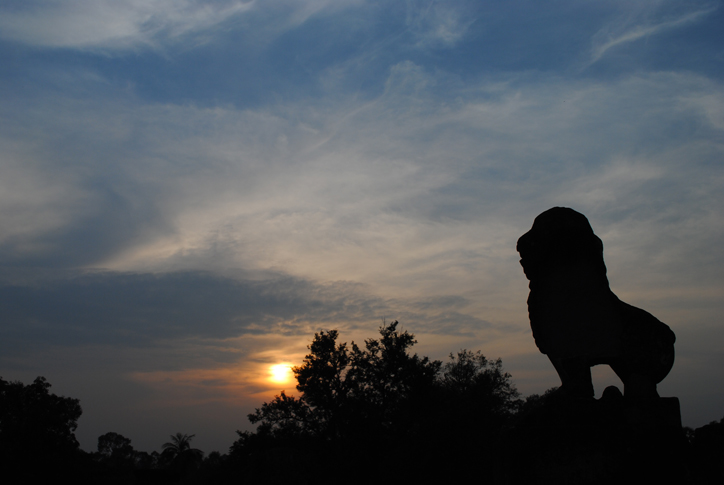
After some unfortunate experiences with the travel bug and an uneventful stay in Vientiane, we finally made it to Siem Reap, i.e. the gateway to Angkor Wat and its many many surrounding temples. So many in fact, that after three days of intense ‘templing’ we still haven’t seen everything. It is an uphill battle… But we’re up for the fight! The whole area that comprises Angkor Wat, one single temple, is over 9 ha large. To give you an idea how big that is: if you’ve been to Le Fonti, that’s 8 ha with vineyards and everything. So there was a lot to cover.
The Angkorian period runs roughly from 900 to 1500 AD with Angkor Wat having been built in the middle of the timeline, in the 1100s. Most of the temples were built for Hindu gods initially: Vishnu, Shiva, Krishna and the like. When Buddhism became de rigeur, the temples were converted by adding Buddha statues. (This also happened the other way around when later a Hindu king ascended the throne again. There was a lot of back and forth…)
This shall not become a history or religion lesson so we’ll let the photos do the talking instead. It was slightly hazy every day so they’re not as crisp and colorful as we had hoped but it should be enough to give you an idea of the place.
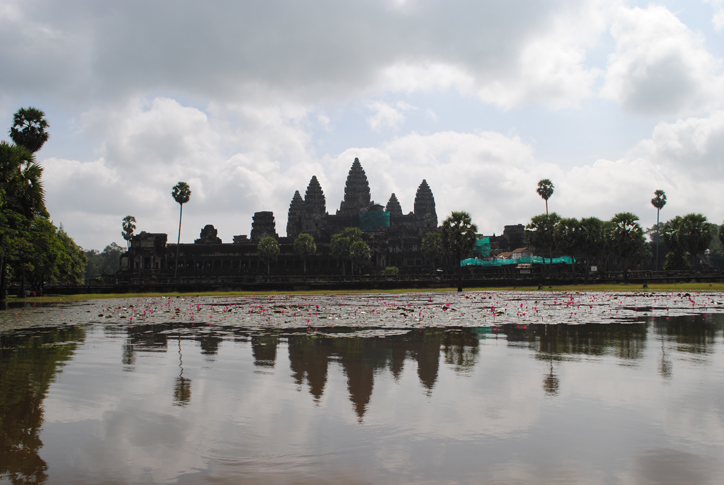
Angkor Wat in all its glory, unfortunately with scaffolding.
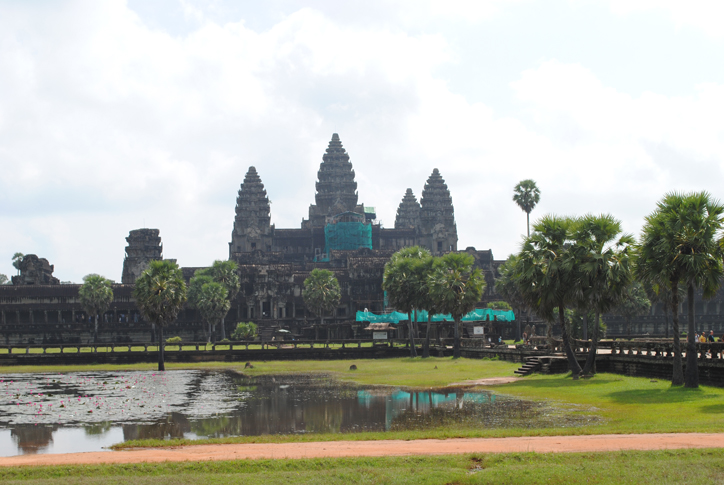
Better colors, same amount of scaffolding.
The walls are all covered in intricate and beautiful carvings. Especially on corners and around entrances, there are usually two different types of figures: apsaras (celestial nymphs, i.e. historical pin-up girls, usually depicted in the process of undressing) and devatas (guardian spirits, also topless but not undressing). The following is an apsara:
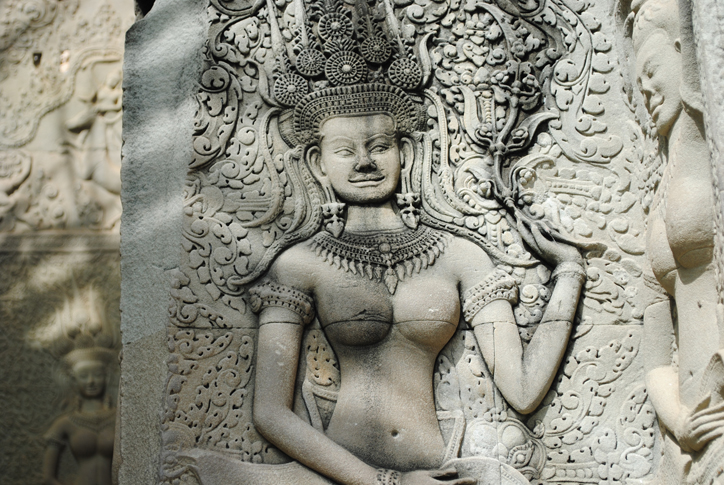
And a picture of the only apsara baring her teeth:
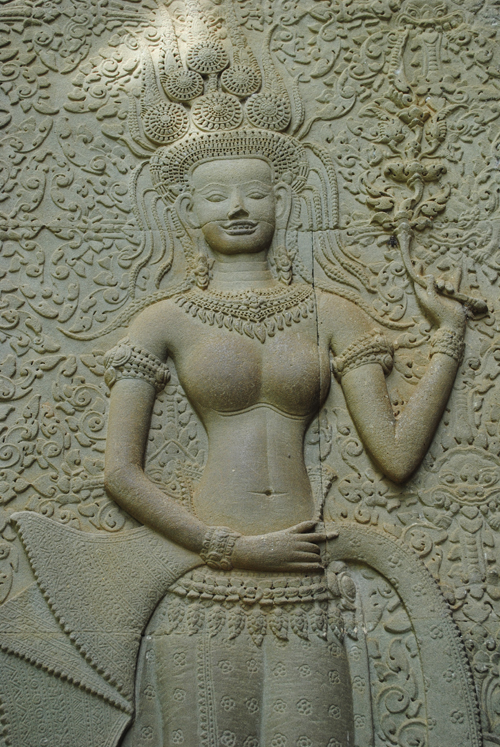
Climbing stairs at any of the temples is no mean feat since they’re giving the Aztecs a run for their money when it comes to steepness:
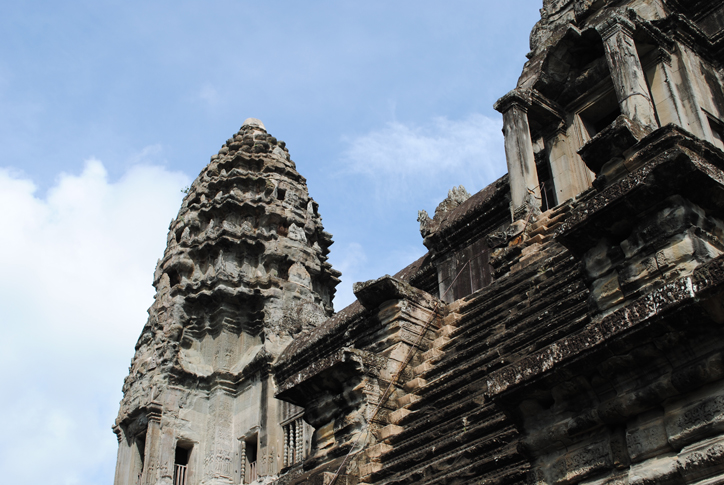
But then you get to see carvings like these and you really don’t care anymore that you’re sweaty and out of breath:
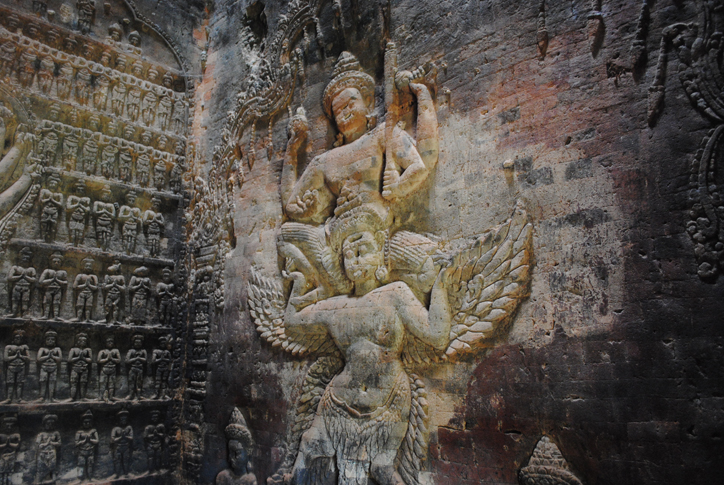
All the temples have been cleaned up quite extensively which has its advantages and disadvantages: they look very much like they might have in former times but you loose that sense of discovery and mystique that inevitably comes with overgrown ruins. Luckily some of the temples have been claimed by nature to such an extent, that removing trees would be removing the fundations. Such as Ta Prohm (the famous “Tomb Raider” temple):

The entrance gate
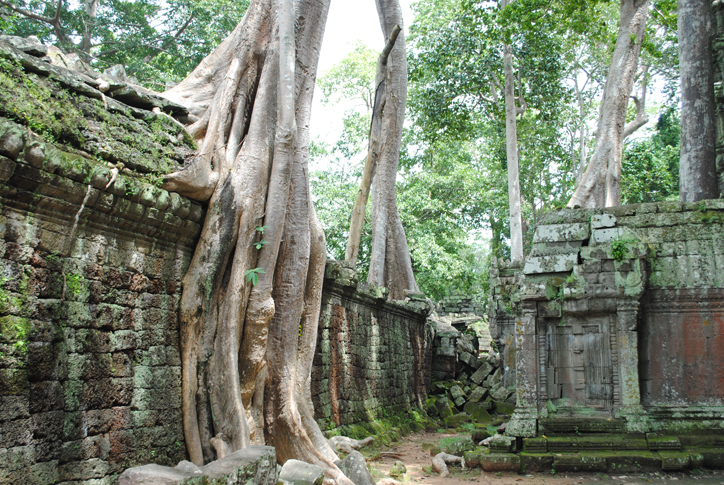
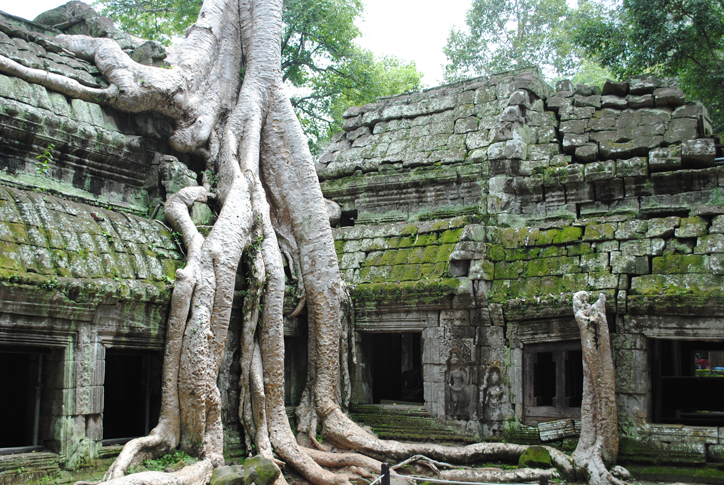
And still you see the apsara and devata carvings everywhere, regardless of tree invasions
Driving between the different temples (usually by tuk-tuk although if you have a masochistic streak then bicycles are available for hire), you see endless fields of rice:
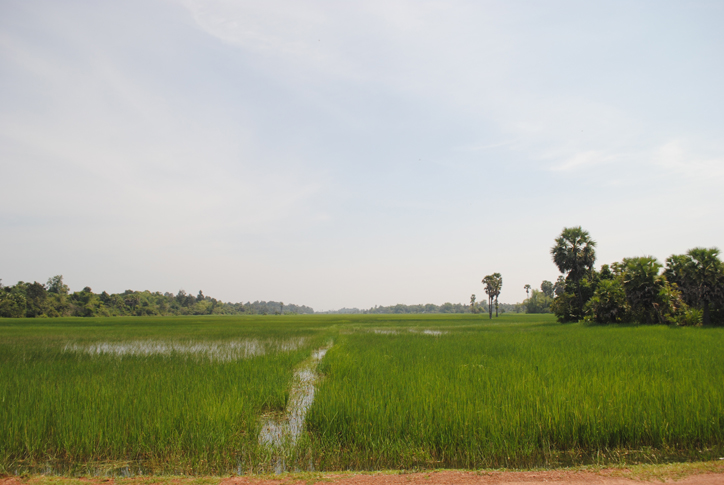
On our last day we visited some temples that are further away from Siem Reap but that have some of the most beautiful carvings of them all. At Phnom Kulen, a national park and holy site, we saw carvings in the river. The king, Jayavarman II, founder of the Khmer empire, bathed in the river thus making it holy. Later he had the water diverted so that carvings could be done in the river bed and on its banks.
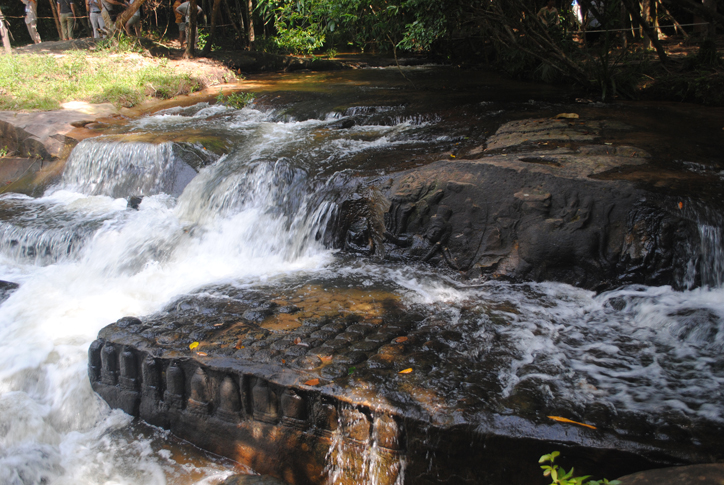
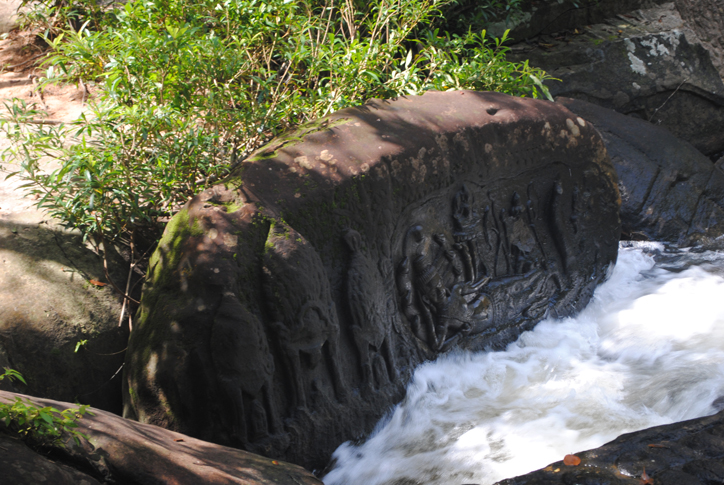
The temples around Siem Reap are wonderfully special and if you ever get a chance to come see them, don’t hesitate. They really are worth the trip.
